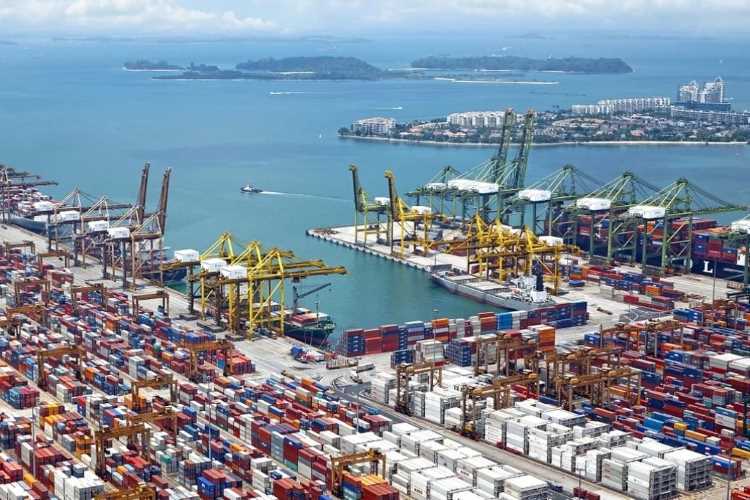UK India FTA on course: India has been on a FTA signing spree lately with its latest round being with the United Kingdom. The two countries, which have shared a turbulent history in colonial times, are also set to sign three memorandum of understanding (MoUs) in three areas — market access, health and education. These will be in addition to the ongoing negotiations for a proposed free trade agreement (FTA) which will be over by the end of August, much before the Diwali deadline set by the two sides. Britain has been keen on settling its economic course after Brexit.
India, which has the reputation of being a slow negotiator, does not want to delay the agreement too because of the uncertainties in UK politics over the exit of Prime Minister Boris Johnson. The country has been assured that the FTA with India will take place irrespective of who comes to power next.
While it was originally planned that the two countries will wrap up their trade agreements by Diwali, the stepping down of UK Prime Minister Boris Johnson may have put the agenda off the rails, especially because Johnson has been a major backer of the UK India FTA. The two countries had entered the negotiations in January this year with an objective of doubling bilateral trade in both goods and services to about $100 billion by 2030.
A free trade agreement is a pact between two or more nations aimed at reducing barriers to imports and exports among them. Under a free trade policy, goods and services can be bought and sold across international borders with little or no government tariffs, quotas, subsidies, or prohibitions to inhibit exchange.
READ I India-UK FTA: Unleashing the bilateral trade potential
Steps towards a UK India FTA
Last week, India and the United Kingdom signed an agreement for mutual recognition of bachelor, masters and doctoral courses. This will allow holders of Indian senior secondary school or pre-university certificates to enter the UK’s higher education institutions, removing barriers to mobility of students. Another agreement on maritime education qualification was signed for mutually recognising the certificates of education and training, competency and endorsements of sailors. India is expected to benefit greatly from the agreement as it has a large pool of trained seafarers.
An agreement on healthcare workforce was also inked which will ensure cooperation in training of healthcare professionals and measures to bridge the skill gap. This will streamline recruitment and training of nurses from India. There is a huge shortage of nurses in the UK, while India has a strong nursing education infrastructure.
Domestic concerns pose hurdle to FTAs
Free trade is the exact opposite of trade protectionism or economic isolationism under which a country does not want to import from other countries or imposes hefty tariffs on imported goods. One example of trade protectionism has been exhibited by the Indian dairy sector which was against importing milk from other nations as it feared that this would undercut domestic players. The country needs to strike a balance between global expectations and domestic concerns while signing trade agreements.
The European Union is a notable example of free trade as the member nations form an essentially borderless single entity for the purposes of trade, and the adoption of the euro by most of those nations smooths the way further.
READ I India must align export promotion schemes with FTAs
Why is the UK India FTA important
The UK India FTA will look at addressing issues such as obtaining permissions, licences to set up operations in each other’s jurisdictions, and create a conducive business environment for both the countries. The deal will improve market access to products such as Indian textiles and British whisky. Moreover, the two countries hope that an FTA could drive down consumer prices while increasing wages across the UK by as much as 3 billion pounds.
Currently, India and the United Kingdom are engaged in the fifth round of negotiations for the FTA and have so far completed 17 of the 26 chapters that will be covered by it. Since it is a modern-day FTA, it will go beyond the traditional pillars like goods, services and investments and is likely to also cover a range of areas, including gender, trade and development, labour, corruption and MSMEs.
Unlike other FTAs, the UK India FTA may cover India’s financial services industry. Former Chancellor of the Exchequer Rishi Sunak has identified India’s insurance sector as an area of possible cooperation. India has been struggling to provide insurance cover to its 140 crore people, and can benefit from the UK’s strong insurance industry. Sunak had also said that the UK can help India in its efforts to float a sovereign green bond.
Other FTAs signed by India
In the free trade agreement sweepstakes, India has joined several partners. The FTA with the United Arab Emirates came into effect on May 1 2022. A trade pact with Australia has also come into force. An agreement with Israel is almost sealed and another with the Gulf Cooperation Council, a union of oil-rich Persian Gulf-states, is on the works. A flurry of trade agreements by India has made London enthusiastic, now that Brexit necessitates the UK to sign bilateral trade agreements.
Meanwhile, there are also hopes of cracking a trade deal with the US which, if it materialises, may solve the tiffs on several issues such as those regarding alphonso mangoes and Harley-Davidson bikes.
Since independence, India has been wary of free trade and it was only after the economic crisis of the 90s that the country opened its gate to foreign trade. In fact, former US president Donald Trump had famously called India a tariff king. While New India initiated FTAs with the likes of ASEAN, New Delhi also received a rude shock after an influx of Chinese products making way from Thailand, taking advantage of the FDA route.

